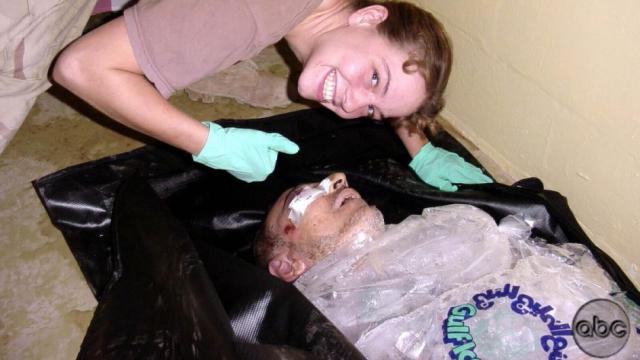Federal judge is demanding that the government explain, photo-by-photo, why it can’t release hundreds, and perhaps thousands, of pictures
showing detainee abuse by U.S. forces at military prison sites in Iraq and Afghanistan.
In a courtroom in the Southern District of New York on Wednesday, Judge Alvin Hellerstein appeared skeptical of the government’s argument, which asserted that the threat of the Islamic State and Al Qaeda exploiting the images for propaganda should override the public’s right to see any of the photos.
He was “highly suspicious” of the government’s attempt to declare the whole lot of the photos dangerous. “It’s too easy and too meaningless,” he said.
Since 2004, the American Civil Liberties Union has been fighting for the release of photos from military investigations into prisoner abuse beyond those that were leaked from Abu Ghraib. The additional pictures reportedly show sexual assault, soldiers posing with dead bodies, and other offenses. The exact number of photos has not been disclosed in court, though former Senator Joe Lieberman has previously said that there are nearly 2,100.
Hellerstein first ordered the government to hand over a subset of the pictures in 2005. President Obama decided to release them in 2009, but Iraqi Prime Minister Nouri al-Maliki and the top American general in Iraq implored him not to. Congress then passed a law amending the Freedom of Information Act to allow the Secretary of Defense to certify that publishing the pictures could put American lives at risk, which then-secretary Robert Gates did.

The ACLU continued to fight the issue in court, and last August, Hellerstein ordered that the government needed to justify withholding each picture individually.
Six months later, the Pentagon has not done that – instead, government lawyers filed a motion in December repeating their position that all the photos were properly kept from the public. The government said that the Islamic State made use of past U.S. abuses when it executed hostages on camera, depicting them “in an orange jumpsuit – a symbol commonly associated with detainees housed at Guantanamo Bay,” and that Al Qaeda wrote about Guantanamo in a recent issue of its magazine Inspire.
Both groups could exploit the photos “to encourage supporters and followers to attack United States military and government personnel,” the government argued in the motion.
In court Wednesday, Assistant U.S. Attorney Tara Lamorte maintained that the Pentagon had already reviewed the photos in 2012. A Pentagon lawyer had brought samples of the various types of photos to senior Pentagon officials, who recommended against publishing them, she said.
Hellerstein did not agree that the 2012 review fulfilled his order. He also said he had originally decided that at least some of the photos should be released, even in the middle of the Iraq war, and did not see the situation now as any different, despite the new threats posed by ISIS. “We’re at a line in the sand,” Hellerstein declared. “I’m not changing my view.”
He gave the government a week to decide what it wants to do: appeal the order, or put forward a plan to comply with it. He suggested that the government could present the photos to him, in a closed session, and explain their rationale for keeping them secret. He also advised the government not to try to delay “the day of reckoning” by drawing the case out on appeal.
“I have to think that this is not an all or nothing case,” he said. “But the way the government has litigated has made it that way.”
This case echoes the Pentagon’s attempts to keep secret videotapes showing hunger-striking Guantanamo detainees being force-fed. The government has said that the videos could “inflame Muslim sensitivities overseas.” (The Intercept’s parent company First Look Media is among the media groups who are trying to get the videos released.)
The judge in that case warned this fall against allowing a “heckler’s veto” over the public interest. She cited one of Hellerstein’s comments from early in the photo litigation, that terrorists “do not need pretexts for their barbarism.”
BLOG COMMENTS POWERED BY DISQUS



